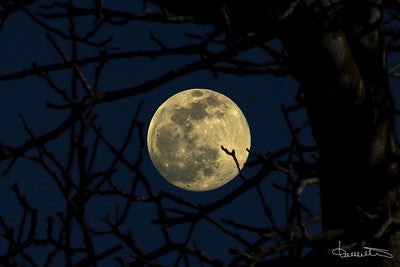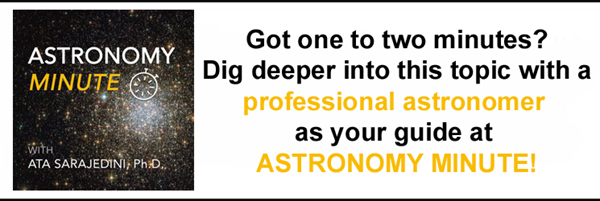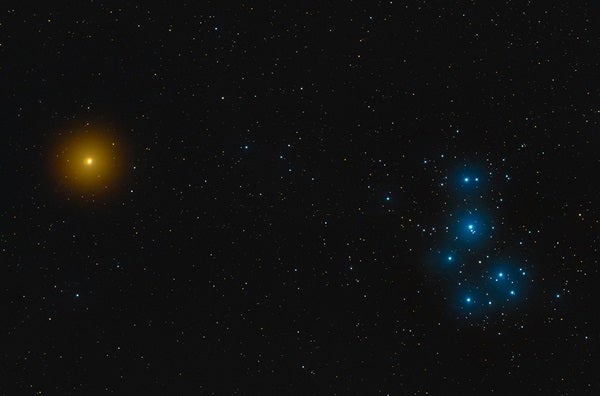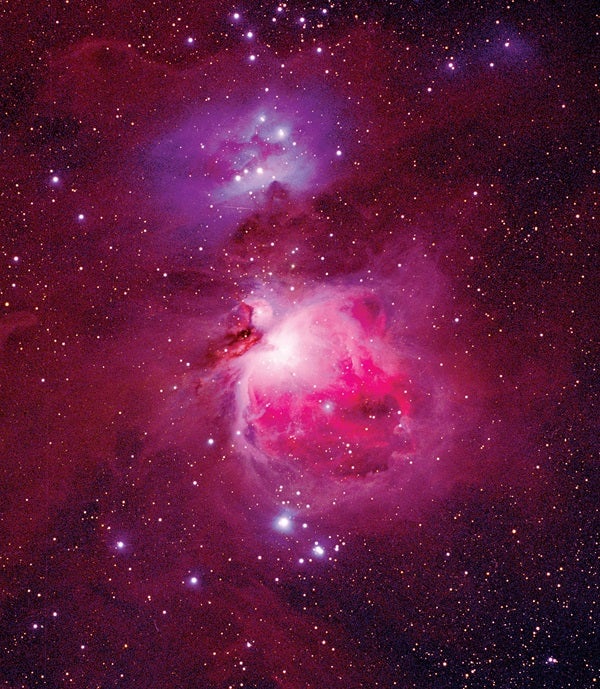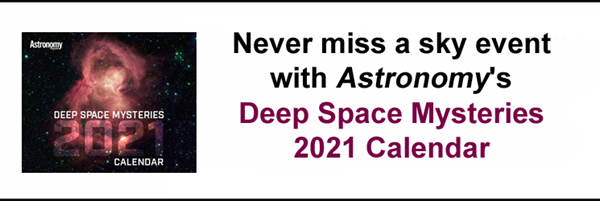Monoceros the Unicorn sits sandwiched between Orion’s two hunting dogs, Canis Major and Canis Minor. You’ll find it sinking in the southwest one to two hours after sunset — but before this region disappears, take some time to hunt down some of the many open star clusters that lie within its borders.
First try for NGC 2286, which shines at magnitude 7.5 and is located a little over 6° northeast of magnitude 5 Beta (β) Monocerotis. A small scope will reveal roughly 30 stars covering a region 15′ across, including the cluster’s two brightest stars: a double system separated by 34″, whose components both shine around magnitude 10.
Once you’ve mastered that challenge, move on to NGC 2311. This cluster is magnitude 9.6 and floats about 1.5° southwest of a different magnitude 5 star: 19 Monocerotis. NGC 2311 is a bit smaller, covering only 7′. Only its brightest 15 to 20 stars are visible through a 4-inch scope; you’ll need 8 inches to double that amount.
Finally, seek out magnitude 7.2 NGC 2335, similar in angular size (7′) to NGC 2311. Although this cluster is still within Monoceros’ borders, the nearest bright signpost is magnitude 4 Theta (θ) Canis Majoris in the Big Dog. NGC 2335 is about 3.5° northeast of this star. A magnitude 7 field star, SAO 134220, lies near the cluster’s core, just 8′ to its northeast. A small scope will net you about 20 cluster stars, but you’ll need something much larger — 12 inches — to double that number.
Sunrise*: 6:37 A.M.
Sunset: 5:49 P.M.
Moonrise: 5:11 P.M.
Moonset: 6:37 A.M.
Moon Phase: Waxing gibbous (99%)
*Times for sunrise, sunset, moonrise, and moonset are given in local time from 40° N 90° W. The Moon’s illumination is given at 12 P.M. local time from the same location.
Full Moon occurs at 3:17 A.M. EST. As February’s Full Moon, it’s also known as the Snow Moon. Our satellite will still be 99 percent lit this evening, when it’s rising as the Sun sets. Because the Full Moon is so bright, it’s difficult to observe deep-sky objects during this phase. But at the same time, the Moon makes an excellent target for beginning and experienced observers alike.
When the Moon is Full, its nearside is experiencing noon — the Sun appears high in the sky for an observer on the lunar surface, which can admittedly wash out some of our satellite’s more subtle detail. But all its seas — or maria — are on exquisite display, showing us exactly where lava once flowed across the surface. These seas are relatively young — 3.8 billion years or younger — because otherwise, they’d be fully covered in craters by now.
The lighter areas that surround the seas are called highlands. These regions have undergone heavy cratering and appear much more rugged and pockmarked. Some of the Moon’s largest craters are also easily visible, including Tycho in the south, Copernicus in the (lunar) west, and Plato in the (lunar) northwest.
Sunrise: 6:36 A.M.
Sunset: 5:50 P.M.
Moonrise: 6:23 P.M.
Moonset: 7:10 A.M.
Moon Phase: Full
Sunday, February 28
The morning triangle of planets formed by Mercury, Jupiter, and Saturn has been flattening over the past several days as Mercury’s declination drops. But at the same time, the tiny planet is growing brighter and easier to see against the twilight sky.
Mercury, now magnitude 0.3, stands a mere 3° west of Jupiter this morning. Saturn is now 5.5° to Mercury’s west. All three are located in Capricornus, slightly southeast of where the Sun is rising. Try viewing them about half an hour before sunrise, taking care not to use any optics — such as binoculars or a telescope — within a few minutes of when the Sun is scheduled to appear at your location.
Looking at these planets gives you a view out through the solar system. All three are currently on the far side of the Sun from our viewpoint. Mercury is closest to Earth at 0.85 astronomical unit, where 1 astronomical unit, or AU, is the average Earth-Sun distance. Next in line is Jupiter, which sits 6 AU away, and lastly is Saturn, at 10.8 AU.
Sunrise: 6:34 A.M.
Sunset: 5:51 P.M.
Moonrise: 7:37 P.M.
Moonset: 7:40 A.M.
Moon Phase: Waning gibbous (97%)
Mars opens the month of March a mere 3° due south of M45, better known as the Pleiades. This sparkling open star cluster is easy to spot with the naked eye in the constellation Taurus, already relatively high in the southwest by the time full darkness falls.
The Red Planet now spans just 6″, making it a disappointing telescopic object if you’re looking for detail. If you are an experienced observer, video capture might net you some surface features.
But it’s still a great bright target for beginning observers eager to explore our solar system from their backyard. Its magnitude 0.9 glow is just the tiniest bit fainter than nearby Aldebaran, a magnitude 0.8 red giant in the Bull’s face that sits among — but is not properly part of — the loose Hyades open cluster.
Sunrise: 6:33 A.M.
Sunset: 5:52 P.M.
Moonrise: 8:49 P.M.
Moonset: 8:09 A.M.
Moon Phase: Waning gibbous (92%)
Tuesday, March 2
The Moon reaches perigee — the closest point to Earth in its slightly elliptical orbit — at 12:18 A.M. EST. At that time, it will sit 227,063 miles (365,422 kilometers) away.
Draco the Dragon sits with his head low to the northern horizon after sunset tonight, but by two hours after the Sun disappears, the magnitude 3.6 star Thuban is nearly 30° high and rising. This seemingly nondescript star has a famous past — it was once the North Star, sitting where the current pole star, Polaris in Ursa Minor, is now located.
That past role is likely the reason Thuban is Draco’s alpha star, despite the fact that it’s fainter than many of the Dragon’s other luminaries. Its name also, curiously, means “the serpent’s head” in Arabic, despite its location in Draco’s tail.
These days, Draco is a circumpolar constellation, meaning it circles the North Celestial Pole. If you stay out late enough, you’ll see the stars of Draco ascend in the sky and then begin arcing back over again as Earth rotates.
Sunrise: 6:31 A.M.
Sunset: 5:53 P.M.
Moonrise: 10:03 P.M.
Moonset: 8:38 A.M.
Moon Phase: Waning gibbous (85%)
Wednesday, March 3
A bright Moon sits near the border of Libra and Virgo tonight, washing out much of the sky after midnight. But there’s still plenty to see. Around 4 A.M., early risers can enjoy the large open cluster M11, also known as the Wild Duck Cluster. Located in Scutum, it’s roughly 20° high two hours before sunrise and rising. Through binoculars, you’ll see a fuzzy patch of light, easily findable with a magnitude of 6.3.
Discovered in 1681, this cluster gains its nickname from the rough V shape formed by its brightest stars, which look a bit like a flock of wild ducks flying overhead. In reality, however, the cluster contains around 3,000 stars, many of which will pop out once you train a telescope on the region.
Sunrise: 6:30 A.M.
Sunset: 5:55 P.M.
Moonrise: 11:17 P.M.
Moonset: 9:09 A.M.
Moon Phase: Waning gibbous (75%)
Thursday, March 4
Asteroid 4 Vesta is at opposition today at 1 P.M. EST. You can find it in the constellation Leo tonight — the main-belt asteroid is now one of the top 10 brightest lights in the Lion’s hindquarters.
Look east and find the right triangle formed by Chertan, Zosma, and Denebola. Tonight, Vesta (around magnitude 6) sits just 1.2° northeast of magnitude 3 Chertan — within one binocular field of view. If you plot the three bright stars on a piece of paper and come back from night to night, you’ll definitely notice Vesta inching along, heading northwest against the background stars.
Vesta, as its number indicates, was the fourth body discovered in the asteroid belt. At roughly 300 miles (480 km) across, it’s half the size of dwarf planet 1 Ceres. The Dawn mission visited both worlds about a decade ago, sending back detailed images and information about them — including evidence that some meteorites we find today on Earth are pieces blasted off the surface of Vesta by past collisions.
Sunrise: 6:28 A.M.
Sunset: 5:56 P.M.
Moonrise: —
Moonset: 9:43 A.M.
Moon Phase: Waning gibbous (65%)
Take some time tonight to enjoy one of the best jewels the cosmos has to offer: the Orion Nebula (M42).
With no Moon in the sky after dark, look southwest to find the familiar three stars of Orion’s belt. These are, from left to right, Alnitak, Alnilam, and Mintaka. About 3.7° southwest of Alnitak is a fuzzy region you can see without any optical aid at all — that’s the nebula. It glows equivalent to a magnitude 4 star and actually covers a region of the sky about six times the width of the Full Moon in total.
Binoculars or, even better, a telescope will reveal a wealth of detail, showing delicate structure in the gently glowing gas of the nebula. A telescope will clearly show the stars of the Trapezium Cluster — several young, bright, hot stars blasting out ultraviolet radiation, which is slowly eroding the nebula in which they sit. Can you make out a darker cavity around these stars, where the gas has already been blown away? Eventually, the Trapezium stars (and others you cannot see) will completely blow away their birthplace, leaving an open cluster like the Pleiades, the Hyades, or the Wild Duck.
Sunrise: 6:27 A.M.
Sunset: 5:57 P.M.
Moonrise: 12:30 A.M.
Moonset: 10:22 A.M.
Moon Phase: Waning gibbous (54%)

